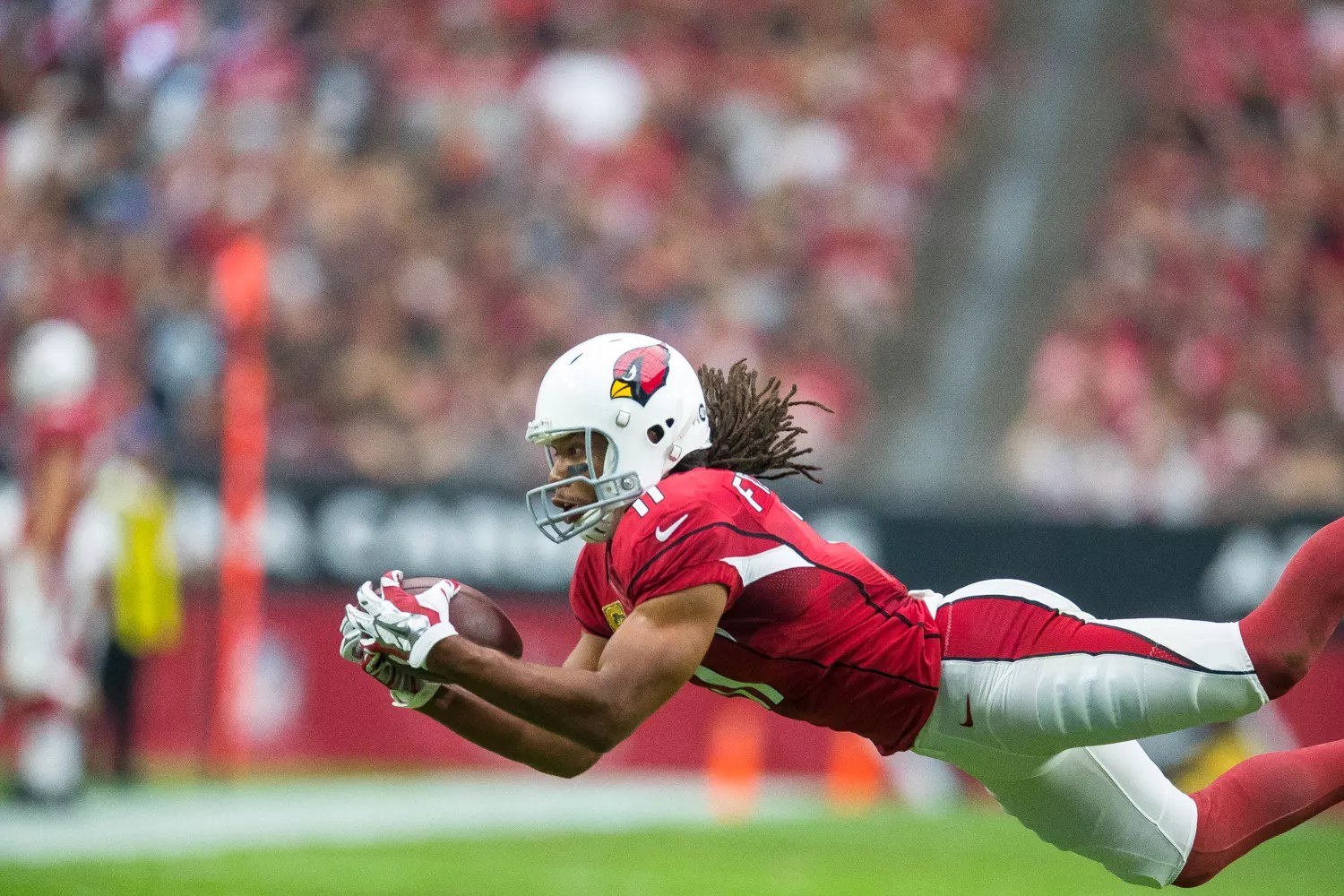
Jim Louvau

Audio By Carbonatix
Arizona Cardinals great Larry Fitzgerald, one of the game’s more consistent receivers during his illustrious 17-season career, will have his first chance at Hall of Fame induction in 2026.
If Fitzgerald is inducted on the first ballot for the Pro Football Hall of Fame, which inducts its 2025 class Aug. 2, he would be the eighth receiver to do so, joining Raymond Berry, Lance Alworth, Paul Warfield, Steve Largent, Jerry Rice, Randy Moss and Calvin Johnson. The 2026 class will be revealed in February.
He’ll be known for something rare in professional sports: staying with the same team his entire career.
“I wanted to help build something lasting, and being part of that growth meant more to me than chasing opportunities elsewhere,” Fitzgerald says. “I always looked for ways to improve and stayed committed to the process.”
This year, make your gift count –
Invest in local news that matters.
Our work is funded by readers like you who make voluntary gifts because they value our work and want to see it continue. Make a contribution today to help us reach our $30,000 goal!
What makes Fitzgerald stand out from other receivers who did not make it in on the first ballot are two things: longevity and postseason performance.
After the age of 30, Fitzgerald had three 1,000-yard seasons and 32 touchdowns. That’s the second most behind Rice. The Buccaneers’ Mike Evans has two seasons and may join or pass Fitzgerald and Rice.
“He was our No. 1 receiver in his early 30s, and he had another 1,000-yard receiver on that team as well,” former Cardinals receiver Michael Floyd says. “Not only was he a top receiver in the league at that point, but combining that with being a leader and having seen everything in your career is critical to being an all-time great.”
There was no magic formula, Fitzgerald says.
“I tried to stay discipline, consistent and truly love the game,” he says. “I always looked for ways to improve and stayed committed to the process. I took care of my body, stayed curious and never lost the passion to compete in all settings in life.”

Fitzgerald played 17 seasons with the Cardinals.
Jim Louvau
Longevity aside, Fitzgerald was a big-game receiver. Though he ranks 21st in all-time postseason receiving yards, he played in nine playoff games and recorded 946 yards. He ranks fifth in postseason touchdowns, with six.
And he thrived despite who was throwing the ball. During his Cardinals career, he played with 21 quarterbacks, meaning he frequently had to navigate different terrain.
“It taught me how to adapt and lead in different ways,” Fitzgerald says. “It also helped in real life, where change is constant.
“Each quarterback brought something unique, but I had a special connection with Kurt Warner and Carson Palmer. I had the most snaps with them as well. We saw the game a similar way and trusted each other in key moments.”
It all started after the Cardinals drafted him third overall out of the University of Pittsburgh in 2004. Fitzgerald had finished second in Heisman voting in 2003 and recorded 22 touchdowns.
“When it came to getting Larry the ball, I was confident no matter what,” says Rod Rutherford, Fitzgerald’s quarterback at Pittsburgh. “He could run any route, catch any ball and turn up field for a big play (and) was simply unstoppable.”
Fitzgerald had lofty expectations entering the NFL.
In the first season of his career, Fitzgerald split reps with reigning rookie of the year Anquan Boldin and recorded fewer than 800 receiving yards.
In his second season in 2005, he took off with 1,409 yards, and from 2006 to 2008, he would record 1,400 yards twice, including the magical 2008 season when he would be named to his only first-team All-Pro team and helped lead the Cardinals to the Super Bowl.
“Despite it ending in a heartbreaking loss, we truly saw one of the greatest postseason performances by a receiver ever,” Cardinals.com beat writer Darren Urban says.
Although the Cardinals went from 2010 through 2013 without making the playoffs, as well as 2016-20, Fitzgerald’s production remained the same, consistently recording Pro Bowl seasons.
“Any time we trailed, we knew we could count on 11 to make a big play,” Floyd says. “I will never forget the 2015 playoff game against Green Bay. He was Superman.”
Besides Super Bowl XLIII, the 2015 divisional round game against Green Bay was a signature moment for Fitzgerald and Cardinals fans everywhere. He recorded 176 yards receiving, including a 75-yard reception followed up by a game-winning touchdown in overtime.
The primary argument against Fitzgerald’s first-ballot candidacy is that he never led the league in receiving yards in a season. Marvin Harrison and Terrell Owens were also not first-ballot Hall of Famers, and both receivers have more first team All-Pro selections than Fitzgerald. Owens had a large number of consistent seasons later on in his career, similar to Fitzgerald.
Based on era-adjusted stats for every first ballot Hall of Fame receiver, many believe Fitzgerald has a good argument for meeting the criteria.
The main question is whether the 50-member Hall of Fame voting committee agrees that Fitzgerald should be inducted on his first try.
“You have to look at the stats and consistency,” Urban says. “Nine 1,000-yard seasons and played at a high level until the final seasons of his career, that should be an indicator of him being on the first ballot next year.”
For more stories from Cronkite News, visit cronkitenews.azpbs.org.